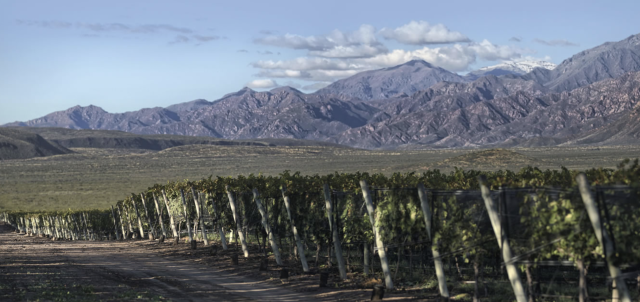This website uses cookies so that we can provide you with the best user experience possible. Cookie information is stored in your browser and performs functions such as recognising you when you return to our website and helping our team to understand which sections of the website you find most interesting and useful.
Why Doña Paula is embracing nature in Argentina
In a bid to enhance wine quality, improve working conditions, and increase the vine’s resilience to extreme weather, one high-end Argentine wine estate is not only going organic, but planting trees and ditching the tilling.

News of the development was announced at last month’s Wine Paris by Doña Paula’s consultant wine director, Cristobel ‘Toti’ Undurraga, who was appointed by the Argentine producer in December to work alongside Martin Kaiser, who is full-time director of viticulture and winemaking.
Undurraga, who met with db at the trade fair on 13 February, said that Doña Paula had started the certification process for organic viticulture in January this year, but was going further, with a planting programme to re-instate native vegetation at the producer’s top vineyards, while also adopting ‘regenerative’ practices.
The latter refers to a decision to increase the amount of microbiological life and carbon in vineyard soils by ensuring the ground is permanently covered with vegetation, which also means leaving it undisturbed – regenerative agriculture generally sees an end to turning or ploughing the soil.
Explaining the changes taking place at Doña Paula, Undurraga told db that the moves were being made to help the winery realise its full potential, above all at its best vineyards, which are based in the Uco Valley, in particular the sub-regions of Gualtallary and Altamira.
Commenting that Doña Paula was a “pioneer” with its Malbec planting in 2006 of Los Indios in the latter Uco sub-region, he said that new vineyard management techniques would bring even better results from what is a “grand cru” of Argentina.
“We are converting to organics, and looking at agroforestry and working with biodiversity, as well as respecting the soils – there is a lot we must do,” he began.
Continuing he explained, “We want to better understand the vineyards, and that means regenerative approaches for the soil, and working with native plants in the area.”
Looking back, he recorded how new plantings saw native vegetation “cleared from the area”, but “today we have to bring life back to the land, which is why we are using agroforestry,” he said.
Speaking further about this, he said, “There were native acacia trees, with over 20 different species in a small area, but these were cut back, but now we are putting them back in the creeks and on the borders [of the vineyards] – we are creating little gardens around the vineyard.”
Not only does this “bring back birds and insects” – which are beneficial – but it also “provides shade” for vineyard workers, according to Undurraga.
As for the soil management in the vineyards, he said that a regenerative organic approach would augment both the soil life and carbon content, stressing that past practices, which involved turning the soil, meant that the carbon “was lost to the atmosphere”, while harming the microbiology by disrupting “the net of communication” in the ground.
Furthermore, by ditching the tilling – and herbicides – the soil has greater plant diversity and, as a result, a larger network of roots, which, he said, “make it like a sponge”. This in turn, increases the soil’s ability to retain water, while keeping the soil cooler.
“Even if in summertime the plants die, they still provide a surface cover to shade the soil, and that means that if the temperature is 30 degrees Celsius, then the ground will be similar to the ambient temperature, but if it is bare, it can reach 45 degrees C,” he said, before commenting that an undisturbed, covered soil will use “30% less water” than a conventionally-managed vineyard where there is no ground-level vegetation.
Not only that, but in a regeneratively-managed site, he told db that the vines root deeper, and get more naturally-occuring nutrients, meaning that the plants are “stronger and more resilient”.
Commenting that the changes he was making at Dona Paula were about “fine tuning”, he said that he was looking at the producer’s best vineyards as “diamonds that can shine more brightly”.
More generally, he said that a move in the wine industry to higher-quality and more sustainably-produced wines was in line with the development of the market.
“Everyone is complaining that wine consumption is going down, but we need to find a way to do it better, and give people what they are looking for – and this [going towards regenerative organic vineyard management] is one way to do it,” he concluded.
Read more
Why ‘regenerative viticulture’ is gaining ground among major wine producers

